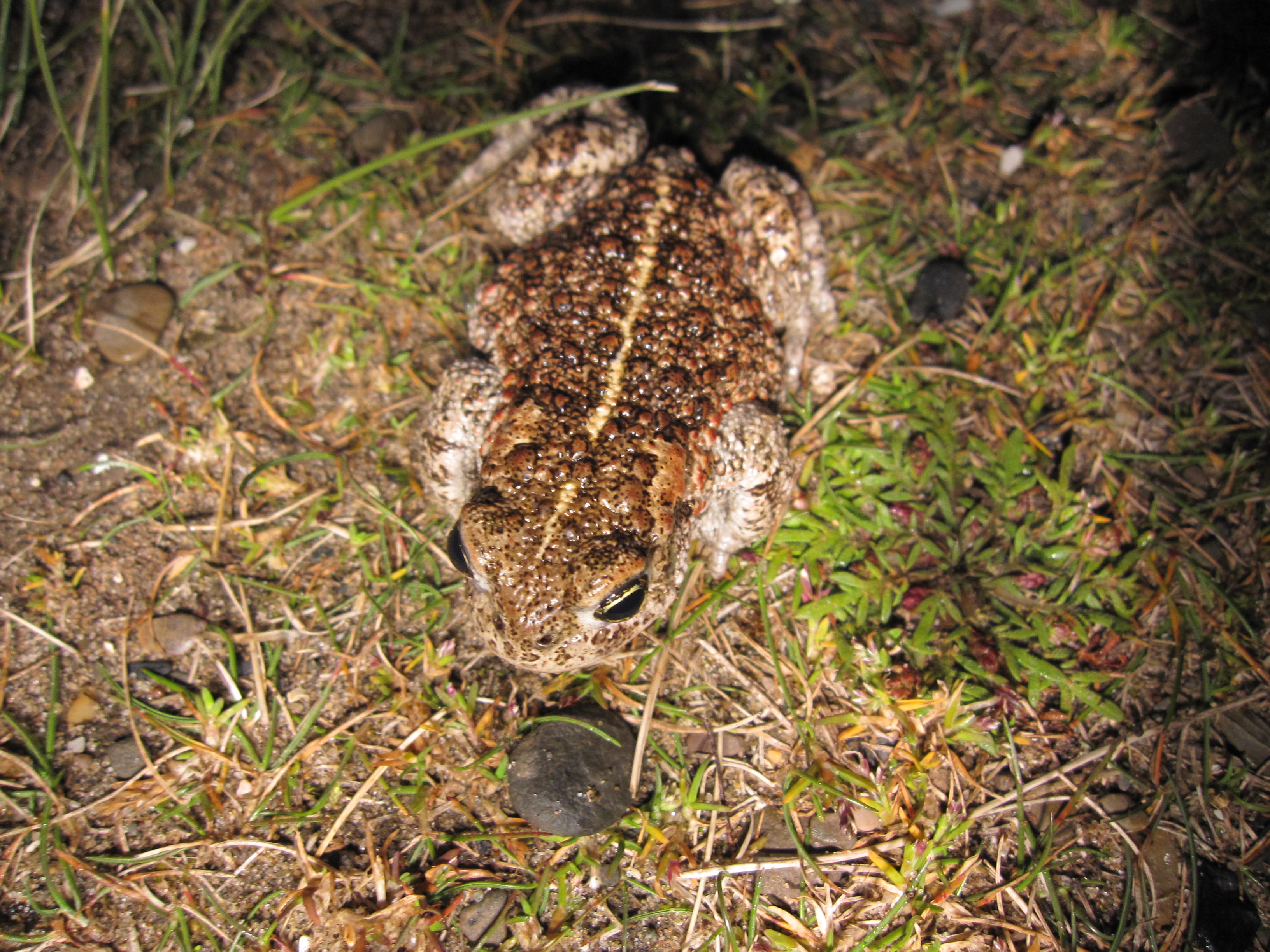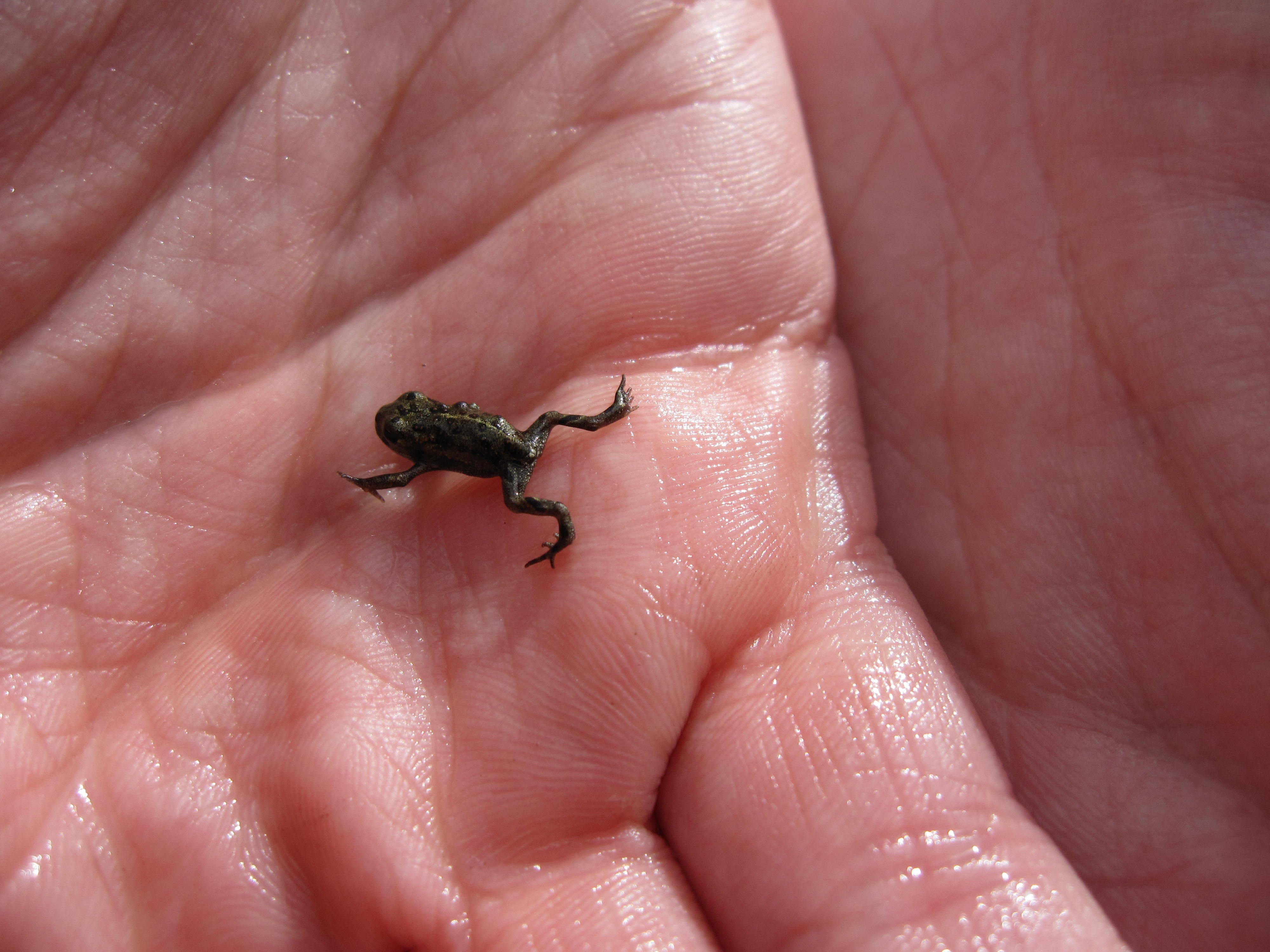Biodiversity
Related Links
Latest News
A Starring Role for Nantclwyd’s Lesser Horseshoe Bats
22.05.2015
Living Landscape Brought Back to Life
05.12.2014
More Information
See our project pages for more information about natterjack toad conservation in Denbighshire. You can also read about how the population has been faring in our newsletter.
Facebook Page
Natterjack toad
This rare amphibian is found at only a handful of sites in Wales, including Gronant Dunes in Denbighshire.
Description and identification: The natterjack toad has warty brown skin and a distinctive yellow stripe down its back. It is slightly smaller than the common toad and tends to walk or run rather than hopping because of its shorter hind legs.
 Habitat: Natterjack toads can inhabit coastal sand dunes, saltmarsh and heathland. They prefer habitats on light sandy soils, with short open vegetation and shallow freshwater pools for breeding. In Denbighshire, they are found in sand dunes.
Habitat: Natterjack toads can inhabit coastal sand dunes, saltmarsh and heathland. They prefer habitats on light sandy soils, with short open vegetation and shallow freshwater pools for breeding. In Denbighshire, they are found in sand dunes.
Diet: The diet of natterjack toads consists of invertebrates, such as woodlice, worms, spiders and beetles. The tadpoles eat aquatic plants.
Ecology and reproduction: Natterjack toads are generally nocturnal. On spring evenings, males make a loud rasping call to attract females to mate. The female lays eggs as strings of spawn in shallow water, which hatch after about a week. The tadpoles grow quickly in the warm water and emerge from the pools as toadlets in as little as six to eight weeks. It takes three to four years for the young toads to reach maturity. The ponds used for breeding typically dry out during the summer. This is beneficial to the natterjacks because it reduces the numbers of predators like fish and dragonfly larvae, which need year-round water to survive. During hot dry weather the toads burrow into sand to protect themselves from drying out, and also use their burrows for hibernation during the winter.
 Distribution: The distribution of natterjack toads has always been restricted in Britain, as the species is at the very edge of its range. They are also found in western and northern Europe, with the highest numbers on the Iberian peninsular. The species was reintroduced to Denbighshire at Gronant Dunes and to neighbouring habitat along the Flintshire coast, after becoming locally extinct.
Distribution: The distribution of natterjack toads has always been restricted in Britain, as the species is at the very edge of its range. They are also found in western and northern Europe, with the highest numbers on the Iberian peninsular. The species was reintroduced to Denbighshire at Gronant Dunes and to neighbouring habitat along the Flintshire coast, after becoming locally extinct.
Threats: The species has been lost from over 75% of its former sites in the last century or so, mainly due to habitat loss. Large areas of sand dunes have been lost through development, including in North Wales.
Status: The natterjack toad is protected under UK and European law and is a priority for conservation at a UK, Wales and Denbighshire level.



